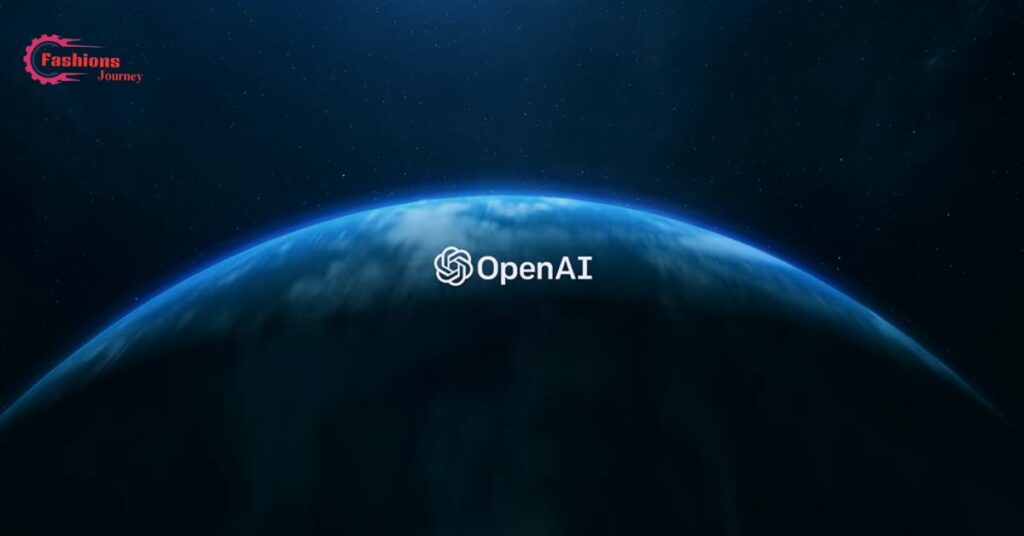Prekladača, the Slovak term for “translator,” encompasses a range of tools designed to bridge language barriers, particularly for Slovak and Central European languages.
These tools include online platforms, mobile apps, desktop software, and dedicated devices, each offering features like text, voice, and image translation to cater to diverse user needs.
While Prekladača tools have revolutionized cross-lingual communication by offering quick and accessible translations, they still face challenges in.
What is Prekladača

Prekladača, which means “translator” in Slovak, refers to a wide array of translation tools and services designed to bridge language barriers.
In the context of Slovak language translation, prekladača encompasses various technologies and platforms that facilitate the conversion of text, speech, or even images from Slovak to other languages and vice versa.
Read This Blog:Unveiling The Story of Emily Compagno Husband Peter Reilly
Online Translators
Online prekladača tools are web-based platforms that offer instant translation services.
These are often the most accessible and widely used forms of translation tools.
Popular examples include Google Translate, DeepL, and Bing Translator.
These platforms typically support a wide range of languages, including Slovak, and offer features like text, document, and website translation.
Offline Translators
Offline prekladača tools are software applications that can function without an internet connection.
These are particularly useful for travelers or individuals working in areas with limited internet access.
Offline translators often come in the form of downloadable dictionaries or phrase books for mobile devices.
While offline translators offer the benefit of accessibility in any location, they may have limited vocabulary compared to their online counterparts and may not receive regular updates to improve translation accuracy.
Mobile Apps
Mobile prekladača apps combine the convenience of online translators with the portability of mobile devices.
Many of these apps, such as Google Translate or iTranslate, offer features like camera translation, voice input, and offline functionality for certain language pairs.
Mobile apps are particularly useful for travelers, offering real-time translation capabilities in various situations.
However, the quality of translations can vary depending on the app and the specific language pair being translated.
Desktop Software
Desktop prekladača software offers more robust translation capabilities for professional use.
These programs, like SDL Trados or MemoQ, often include features such as translation memory, terminology management, and quality assurance tools.
Desktop software is typically used by professional translators and localization specialists.
While these tools offer high-quality translations and advanced features, they often require a steeper learning curve and can be more expensive than other options.
Dedicated Translation Devices

Dedicated translation devices are hardware specifically designed for language translation.
These portable devices often combine offline translation capabilities with features like voice recognition and text-to-speech functionality.
While less common than software-based solutions, dedicated translation devices can be useful for travelers or professionals who frequently need translation services in areas with limited internet connectivity.
Read This Blog: Discover the Magic of ChillWithKira Ticket Show
Key Features of Popular Prekladača

Popular Prekladača tools offer a variety of key features to facilitate efficient translation.
These typically include support for multiple languages, with some tools like Google Translate covering over 100 languages, as well as different modes of translation such as text, voice, and image recognition.
Advanced features often encompass real-time conversation mode, document translation with formatting preservation, and offline capabilities, making these tools versatile for various personal, professional, and educational applications.
Language Support
One of the most crucial aspects of any prekladača tool is the range of languages it supports.
For Slovak users, it’s essential to choose a tool that not only translates from Slovak to major languages like English, German, or Russian but also supports translation between Slovak and less common languages.
Most online prekladača tools support a wide range of languages, with Google Translate offering translation between Slovak and over 100 other languages.
However, the quality of translation can vary significantly depending on the language pair.
Modes of Translation
Modern prekladača tools offer various modes of translation to cater to different user needs:
- Text Translation: The most basic function, allowing users to input text and receive a translation.
- Document Translation: Many tools can translate entire documents while maintaining formatting.
- Website Translation: Some prekladača tools can translate entire websites, either through browser extensions or by inputting the URL directly into the translation platform.
- Voice Translation: This feature allows users to speak into their device and receive a translation in either text or audio format.
- Image Translation: Using optical character recognition (OCR) technology, some tools can translate text within images or photos.
Specialized Functions
Advanced prekladača tools often include specialized functions to enhance the translation experience:
- Translation Memory: This feature stores previously translated segments, improving consistency and efficiency for repetitive translations.
- Terminology Management: Allows users to create and maintain glossaries of specific terms, ensuring consistent translation of technical or industry-specific vocabulary.
- Machine Learning Integration: Some tools use machine learning algorithms to improve translation quality over time based on user feedback and corrections.
- Collaborative Features: Professional translation software often includes features for team collaboration, version control, and project management.
Benefits of Using Prekladača

Prekladača tools offer significant benefits across various domains, enhancing learning and education by breaking down language barriers and facilitating access to diverse resources.
In the business world, they boost efficiency by enabling seamless communication with international clients and partners, while also streamlining document translation processes.
Moreover, these tools save considerable time and effort in both personal and professional contexts, providing quick translations for everyday use and travel situations.
Enhancing Learning and Education
Prekladača tools can be valuable assets in language learning and education.
They provide instant access to translations, helping students understand foreign language texts and expand their vocabulary.
However, it’s important to note that while these tools can aid learning, they should not replace traditional language learning methods.
This can foster a more inclusive educational environment and facilitate cross-cultural understanding.
Boosting Business Efficiency
In the business world, prekladača tools can significantly enhance communication and efficiency.
While professional human translation is still preferred for critical business documents, prekladača tools can be invaluable for quick, informal translations and for getting the gist of foreign language content.
Time-Saving
One of the most significant benefits of prekladača tools is the time they save.
What might take a human translator hours or even days can be accomplished in seconds by a machine translation tool.
This rapid translation capability allows for quick decision-making and faster information processing in both personal and professional contexts.
Challenges and Limitations

Despite their utility, Prekladača tools face several challenges and limitations.
Accuracy remains a primary concern, particularly with complex sentences and idiomatic expressions, where machine translations often struggle to capture nuanced meanings.
Contextual understanding poses another significant challenge, as automated systems may misinterpret language subtleties, especially in less common languages.
Additionally, data privacy issues arise when using online translators, raising concerns about the security of sensitive information being translated.
Accuracy
While prekladača tools have improved dramatically in recent years, accuracy remains a significant challenge.
Machine translation often struggles with:
- Idiomatic expressions and cultural nuances
- Complex grammatical structures
- Technical or specialized vocabulary
- Ambiguous words or phrases
Users should be aware that translations provided by prekladača tools may contain errors and should be reviewed carefully, especially for important or sensitive content.
Contextual Understanding
One of the biggest limitations of current prekladača technology is the lack of contextual understanding.
Machine translation tools often translate sentences in isolation, without considering the broader context of the text.
This can lead to misinterpretations, particularly in texts with subtle meanings or complex themes.
Data Privacy
As with many online tools, data privacy is a concern when using prekladača services.
Users should be aware that when they input text into an online translator, that text may be stored and used to improve the translation algorithms.
For sensitive or confidential information, it’s advisable to use offline translation tools or services with strong privacy policies.
Usage Scenarios for Prekladača

Prekladača tools find application in diverse scenarios, ranging from personal to professional use.
In personal contexts, they assist travelers in navigating foreign countries and facilitate communication with friends or family speaking different languages.
Professionally, these tools are essential for translating business documents, emails, and supporting multilingual customer service, while in educational settings, they aid students and researchers in accessing and understanding materials in various languages.
Personal Use
In personal contexts, prekladača tools can be used for a variety of purposes:
- Understanding foreign language content on social media or websites
- Communicating with friends or family members who speak different languages
- Translating menus, signs, or instructions while traveling
- Assisting with language learning and practice
Professional Use
In professional settings, prekladača tools can be employed for:
- Translating business correspondence and documents
- Localizing websites and marketing materials for international markets
- Facilitating communication in multilingual teams or with international clients
- Quick translation of foreign language news or industry reports
Educational Use
In educational contexts, prekladača tools can be utilized for:
- Assisting students in understanding foreign language texts
- Creating multilingual learning materials
- Facilitating communication between educators and non-native speaking students or parents
- Supporting research in foreign language sources
Future of Prekladača
The future of Prekladača looks promising, with advancements in AI and machine learning set to enhance translation accuracy and contextual understanding.
Integration with augmented reality technologies may soon enable real-time visual translations, while expanded language databases will support an even wider range of languages and dialects.
As these tools evolve, we can expect to see improved data privacy features, making Prekladača an increasingly powerful and secure solution for breaking down language barriers in our increasingly globalized world.
Advancements in AI and Machine Learning
The future of prekladača technology is closely tied to advancements in artificial intelligence and machine learning.
We can expect to see:
- Improved accuracy through more sophisticated neural network models
- Better handling of context and nuance in translations
- Enhanced ability to translate specialized and technical content
- More natural-sounding translations that closely mimic human language use
Integration with Augmented Reality (AR)
The integration of prekladača technology with augmented reality holds exciting possibilities.
We might soon see:
- Real-time translation of text viewed through smartphone cameras or AR glasses
- Instant translation of spoken words in face-to-face conversations through AR interfaces
- Interactive language learning experiences using AR and translation technology
Expansion of Language Databases
As more data becomes available and more languages are digitized, we can expect prekladača tools to support an even wider range of languages and dialects.
This will be particularly beneficial for preserving and facilitating communication in less commonly spoken languages.
Enhanced Data Privacy
As concerns about data privacy grow, we’re likely to see prekladača tools develop more robust privacy features. This might include:
- End-to-end encryption for translations
- Options for local processing of translations without sending data to servers
- More transparent policies about data usage and storage
FAQ’s
How accurate are prekladača translations?
Generally, translations between common language pairs are more accurate, but may still contain errors, especially with complex or idiomatic phrases.
Are prekladača translations suitable for personal use?
Yes, prekladača tools are generally suitable for casual personal use like understanding foreign websites or basic communication.
Can prekladača translate files with formatting intact?
Many advanced prekladača tools can maintain document formatting during translation, but the accuracy may vary.
How do prekladača tools handle slang and idiomatic expressions?
Most prekladača tools struggle with slang and idiomatic expressions, often providing literal translations that may not convey the intended meaning.
Can prekladača translate audio and video content?
Some advanced prekladača tools offer speech-to-text and translation capabilities for audio content.
Conclusion
Prekladača tools have revolutionized the way we approach language barriers, offering quick and accessible translation solutions for a wide range of scenarios.
From simple online translators to sophisticated professional software, these tools cater to diverse needs in personal, professional, and educational contexts.
While current prekladača technology still faces challenges in terms of accuracy and contextual understanding, ongoing advancements in AI and machine learning promise to address these limitations.
The future of prekladača looks bright, with potential integrations with augmented reality, expanded language support, and enhanced privacy features on the horizon.

Liam Patel is a passionate fashion enthusiast with a keen eye for style trends.
With a background in textile design and years of experience in the fashion industry, Liam brings a unique perspective to his writing. He loves exploring sustainable fashion and street style.








